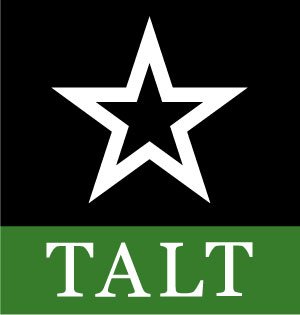Haier Ranch
A Journey to Conservation
In the heart of the Texas Hill Country—where development pressures are rising and land fragmentation is an ever-present threat—a story of restoration and legacy is unfolding. It begins decades ago in Karnes County, where Bobby Haier spent his childhood on a small cattle farm. His family eventually lost that farm, and Bobby was thrust into urban life on San Antonio’s east side. But that early connection to the land never left him.
“I’ve worked my whole life just to be able to go back and live how I first lived when I was a kid,” Bobby says.
That lifelong journey came full circle when the Haier family recently purchased a 471-acre property—now known as Haier Ranch—that sits along the Little Blanco River in Blanco and Comal counties. The land was placed under a conservation easement held by the Texas Agricultural Land Trust (TALT), ensuring it will remain intact and productive for generations to come.
This is a story about more than land. It’s about stewardship, values, and the kind of legacy that spans generations.
A Meeting of Minds
The seller, Little Blanco Partners LLC, was a trio of conservation-minded individuals who had purchased the land to keep it from being carved into ranchettes. They were searching for a buyer who shared their vision—and they found one in Bobby Haier.
When Bobby called one of the partners, in September 2024, he already knew the land was being sold subject to a conservation easement. Rather than see that as a hurdle, Bobby saw it as a blessing.
“I was basically getting the property at near half price from market with all of those benefits built in,” Bobby says. “The objectives of the easement completely aligned with what we wanted to do.”
In fact, Bobby was involved in negotiating the easement terms before the sale even closed—an unusual but vital collaboration that ensured both the seller’s and the buyer’s visions would be honored.
The Next Generation
Chris Haier, Bobby’s youngest son, is the one who will carry the ranch forward. A full-time firefighter in New Braunfels, Chris lives with his wife and young son on a 150-acre property just down the road. It’s where his passion for land stewardship began, and where he’s been developing a working homestead with orchards, sheep, hay fields, and gardens.
“I only work 10 days a month at the fire station,” Chris explains. “So, on my days off, I’m out there—raising livestock, fencing, clearing brush, managing the land. It’s hard work, but it’s deeply fulfilling.”
Chris and his wife Riley built their home in 2022. Now, with their son Wesley turning one, they’re eager to raise their family in a rural, grounded lifestyle. “This is how we want our kids to grow up—doing chores, learning responsibility, living close to the land,” Chris says.
Riley, who grew up in suburban Richardson, Texas, has embraced ranch life wholeheartedly. “She’s the top hand out there,” Chris laughs. “She runs the show.”
Chris says the best thing about the family land in Central Texas is that it has become the meeting ground for the entire family.
“This is where my brother, my sisters and my parents come together to enjoy the ranching lifestyle together,” says Chris. “When my sisters visit, I love to show them how to care for the livestock. I hope one day when they get older, they will be involved in the future of this ranch and that this land will be a significant part of their lives, too.”
Land with Legacy
The property itself—formerly known as the Dubose Ranch—is remarkable in its conservation value. It sits along more than 8,000 feet of Little Blanco River frontage and includes upland brush, native grasslands, and habitat for white-tailed deer, songbirds, and other wildlife. The land is part of the Edwards Plateau, an ecologically diverse region that plays a critical role in aquifer recharge and biodiversity.
TALT’s conservation easement permanently protects this land from subdivision and intensive development—pressures that are increasingly common in Blanco and Comal counties, which have seen staggering population growth and loss of working lands in recent years.
“Without the easement, a place like this would’ve been gone,” Chris says. “It would’ve been just another subdivision.”
Instead, it will become a working cattle ranch, with 25 to 30 mama cows—just like the one Bobby grew up on.
“This land is a gift,” Bobby says. “We want to take care of it, restore it, and pass it on.”
A Family Rooted in Service
The Haier family’s commitment to service goes far beyond the fence lines of their ranch. Bobby and his wife Eva, married for over 36 years, adopted two young girls through CPS after their sons were grown. While the girls are currently thriving at Cypress Christian School in Houston, Bobby added that “They share in a legacy centered upon Jesus Christ and His love for us. A love that extends to His creation and to everyone around us.”
In 2018, Bobby also founded a nonprofit in Nepal called Climb Haier International, following a mission trip that stirred his heart. The organization has since grown to nearly 40 staff members and thousands of volunteers focused on loving people through public education, clean water, medical care, disaster relief, and vocational training initiatives.
Bobby shared that “We have 10 training centers, actively combat human trafficking of Nepali children in India, and build community centers throughout Nepal to bring hope to the hopeless. We’ve helped tens of thousands of people, and it’s all for the glory of God.”
Looking Ahead
While Bobby and Eva still live in Houston to support their daughters through school, Bobby plans to spend more and more time at the ranch as he transitions out of his financial career. Eventually, the family plans to move to Central Texas full-time.
Until then, the ranch will be in good hands.
“Chris is doing what I always dreamed of doing,” Bobby says. “To see him living that life, raising his son the way I wanted to raise mine—on the land, with hard work, and purpose—it’s more than I could’ve asked for.”
It’s not just a story of land. It’s a story of returning, restoring, and building something that lasts. In a region where growth threatens to erase the past, the Haier family is writing a different future—one rooted in heritage, responsibility, and hope.



